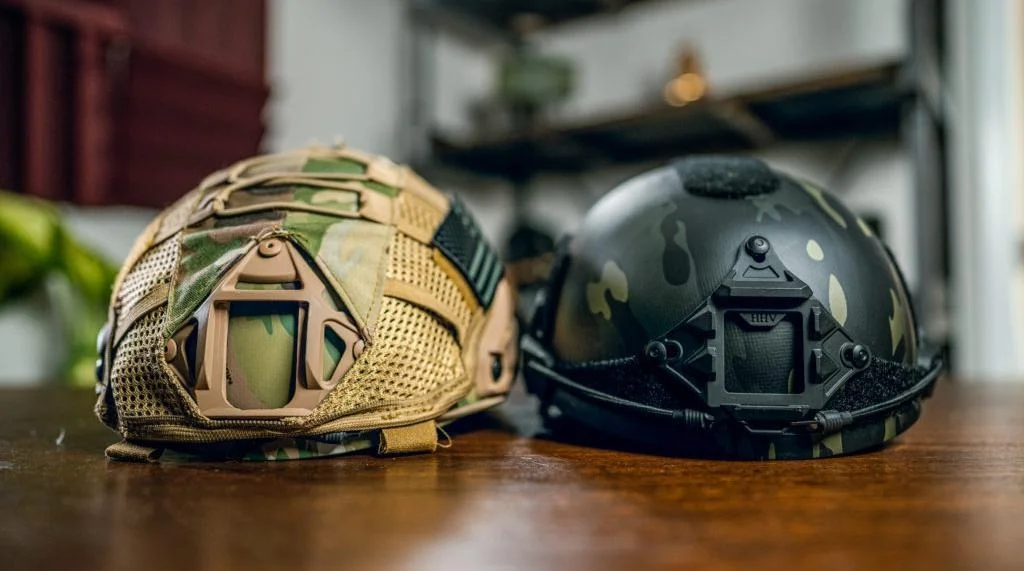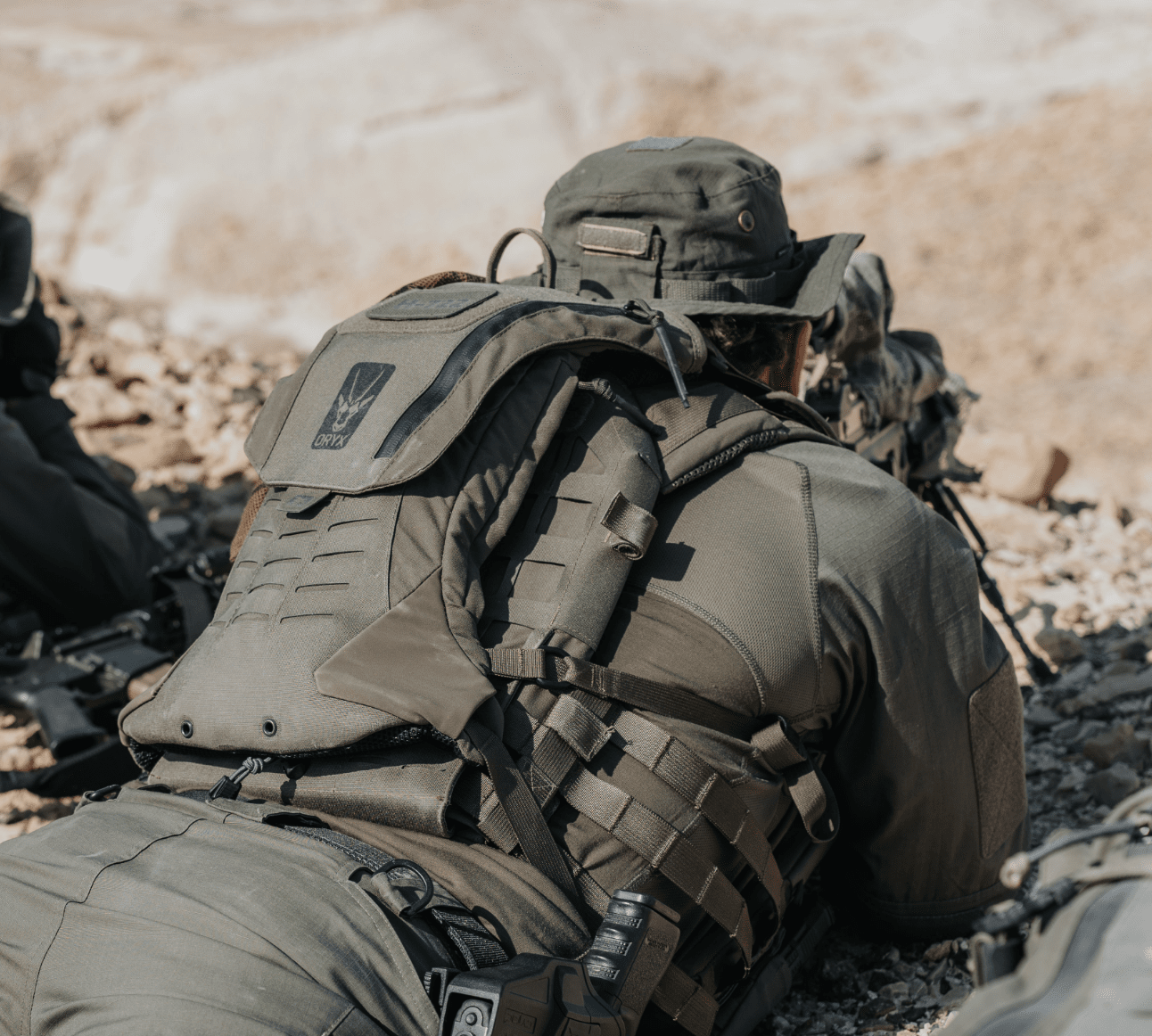Ballistic helmets are a very important piece of tactical equipment. In addition to offering ballistic protection, they serve as a crucial tactical tool for carrying a variety of attachments such as lights, night vision goggles, communication equipment, and much more.
A tactical helmet is an essential piece of a soldier's equipment that has saved countless lives. Ballistic helmets are frequently worn by members of special forces. Ballistic helmets may also be used by special tactical military and law enforcement organizations like SWAT and FBI tactical units.
Despite the fact that most people are generally aware of body armor, they frequently have inquiries about ballistic helmets. Looking to add some ballistic helmets to your tactical equipment? Choosing the best ballistic helmet might be difficult with so many companies vying for your business on the market. So let's try to locate the answers to your queries concerning ballistic helmets.
A BULLETPROOF HELMET: WHAT IS IT?
A tactical helmet called a bulletproof helmet, or more precisely a "ballistic helmet," is made to shield the wearer's head from hazards such as blunt impact, ballistic impact, and blast debris. In order to offer complete covering and protection, it is often worn in conjunction with ballistic-resistant body armor.
The ballistic helmet is typically worn by military personnel during combat, and it is also a frequent piece of equipment for police enforcement during tactical operations. However, even people searching for additional ballistic protection when working with firearms can benefit from using them.
WHAT IS CONTAINED IN A BALLISTIC HELMET?
In addition to stopping bullets, a ballistic helmet should be pleasant to wear and useful in the field. Consequently, a ballistic helmet needs to have some cushioning and webbing inside of it.
-
PADDING
A tactical helmet can shield your head from a bullet, but being struck while wearing one could still be fatal. Even though they can be stopped from penetrating, bullets have a lot of force, and that force needs to go somewhere.
With body armor, the force is absorbed into the chest, potentially breaking ribs and piercing lungs. When the power is spread evenly across a person's chest, it is, nonetheless, still tolerable. The force of a bullet striking your tactical helmet may be far too concussive for your head, and occasionally the blunt contact alone may be fatal. Therefore, padding that serves as a cushion and lessens concussive forces must be included in ballistic helmets.
The padding of a bulletproof helmet is typically comprised of foams, rubbers, or plastics, however, hybrid solutions are also available. For the best comfort, use foam padding. a vast range of polyester, polyurethane, or polyethylene foams with open or closed cells and varying densities. Ballistic helmets are required by industry standards to contain padding, and almost all of them do.
-
WEBBING
To ensure that they remain in place and feel comfortable in tactical conditions, combat helmets must also feature an effective retention system. Furthermore, a solid retention mechanism is even more crucial nowadays with all the tactical equipment fitted on military helmets.
However, modern tactical helmets have much more sophisticated harness systems, allowing for more comfort and better retention, especially since modern military helmets also need to be able to carry tactical gear. Old military helmets, like those used in World Wars I and II, had simple leather straps.
Modern H-harnesses are found on helmets like the ACH and the MICH helmet. Four points on the retention system secure it to the helmet. Its chin cup and several adjustment points let you customize the helmet to fit your unique head shape.
WHAT IS ON THE TACTICAL HELMET
-
Side RAILS
Any modern combat helmet must have side rails, which act as points of attachment for a range of gear and accessories. They are most frequently used to mount communication equipment, and occasionally hearing protection as well.
Side rails are frequently utilized in combat situations to equip face shields, ballistic face protection masks, and flashlights. For recording and sending live feeds of the battle back to their command centers, the majority of contemporary tactical forces also put cameras on their helmets. In some circumstances, gas masks can also be mounted on side rails.
-
NIGHT VISION GOGGLES SHROUD
NVGs, or NODs as they are more frequently known among military personnel, are essential pieces of equipment for ground soldiers. They enhance troop observational skills by enhancing visibility in the dark and enhancing the military's ability to carry out clandestine operations.
Since night vision equipment may be mounted on NVG Shrouds, the majority of contemporary helmets also include them. These gadgets can then be quickly and easily folded open for use.
DIFFERENT BALLISTIC HELMET TYPES
The PASGT was used by the U.S. military from 1983 until the middle of the 2000s as one piece of a protective gear set that also included a ballistic vest. It is the first and maybe most significant design of the three ballistic helmets that are currently available for general purchase.
The U.S. Army Reserve and the U.S. Navy still utilize this tried-and-true ballistic helmet style for sailors aboard warships.
In terms of ballistic defense, it is the initial gold standard. The outer shell of this helmet is typically made of multiple layers of Kevlar, and it also has a low cut over the ears and a lip over the brow. It can be used by various military branches and comes in a variety of colors and patterns.
The helmet can be customized with add-on components including a mounting assembly for night vision goggles and a riot control visor through careful drilling into the Kevlar.
LEARN MORE: THE HISTORY OF KEVLAR
The PASGT's replacement is called the MICH. After research to create a ballistic helmet that was lighter, more comfortable, and still as protective as its predecessor, it debuted in early 2001.
The helmet was redesignated to the Advanced Combat Helmet after the U.S. Army adopted the MICH in 2002. (ACH). Modern Kevlar is used to make the helmet. For usage by SWAT teams, it is available in a variety of camouflage designs or in solid black.
The MICH's designers also focused on making sure the helmet was simple to equip with accessories. It wouldn't slip forward over the eyes in certain situations when pressed by the Interceptor's high collar. Additionally, side rails were built so that accessories could be mounted without drilling into the Kevlar.
The U.S. Marine Corps Forces Special Operations Command and the U.S. Air Force Security forces both employ the MICH as one of their helmets at the moment.
Today, a number of special operations units employ various FAST iterations.
The FAST's high-cut sides, which expose the ears, are one feature that immediately distinguishes it from other ballistic helmets. To protect the occipital bone at the back of the skull, the helmet then curves downward once again. This high-cut ear style was initially intended for use in marine special operations. Traditional helmet designs were dangerous to use at sea when moving quickly because water may become caught in the ear cups.
A night vision goggle shroud, electronic ear muffs, and other combat accessories may be mounted on the helmet thanks to its high cut and side rail system. Naturally, a MICH helmet also accepts these accessories, but the FAST stands out for being heavier. It is comprised of a mix of carbon, unidirectional polyethylene, and woven aramid, making it substantially lighter than the MICH.
Purchasing a helmet is an investment in your well-being and security, and ultimately, an investment in you. Depending on your particular requirements, you can choose a helmet made to withstand gunfire, or you might go with the more straightforward FAST High-Cut Bump Helmet. Please don't hesitate to contact Zennison if you have any commands; we value our clients and are always delighted to assist you in finding what you need to finish your next assignment!



